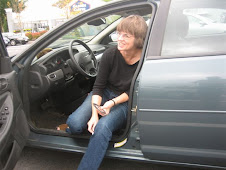I never heard of Rosalind Franklin. We've all heard of Francis Crick and James Watson and their Nobel prize for discovering the structure of the DNA molecule. It was Franklin's x-ray photograph of the molecule that showed them what it looked like. Her boss, whom she wasn't even speaking to at the time she shot the molecule, shared in the prize with them.
Rosalind is not the Dark Lady of DNA, except that she worked in a photography lab. She personifies her age: science being predominantly an all boys club where connections and influence tampered with pure discovery in award making. Rosalind like all of us inherited characteristics for her family's genes and her family's history in a point of time. She focused on accuracy and precision, at a cost of forgoing leaps of imagination. All of her work rested on fact and direct observation, she was not a speculator. Her talents and assets were recategorized as flaws and limitations by more tied in ambitious male scientists.
She bounced around the world trying to get a position in a laboratory that was tenured and accommodating. It proved almost impossible.
The book could make a livid feminist extol her as an abused victim of male dominance. That band wagon seems to play a song most younger women no longer listen to. It becomes more a morality tale, of a woman tempered by her culture and time. But aren't we all? It is a tale of caution and insight, suggesting skills women might need to still navigate the world of work successfully.
To Crick and Watson, there was no i teamwork, but a big capital one in PrIze.
Wednesday, March 14, 2018
Subscribe to:
Post Comments (Atom)



No comments:
Post a Comment